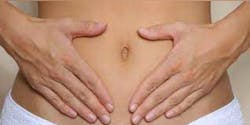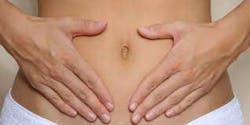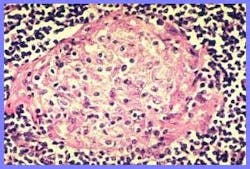Crohn's disease
Signs of orofacial Crohn’s disease include: mucogingivitis; mucosal tags; deep linear ulcers in the fold between the cheek and gingival tissue; cobblestoning of the lining of the inside of the cheeks; lip swelling (macrochelia), with or without fissuring; metastatic Crohn’s disease involving skin of the face may present as ulcers, papules, nodules, plaques or persistent swelling.(8) Treatment options include: cinnamate- and benzoate-free diet; corticosteroid mouthwash; immunosuppressive treatment including systemic steroid; and azathioprine as for bowel disease.(9)
A recent study tested the theory that patients with Crohn’s disease have a higher prevalence and risk for caries compared to people without the disease.(10) Patients with Crohn’s disease were divided into groups among those who have had resective intestinal surgery and those who had not. The patients were compared to 75 controls. DMF-T and DMF-S, Lactobacilli (LB), Streptococcus mutans(SM), salivary flow and dental plaque. (Decayed (D) Missing (M) Filled (F) teeth (T) or surfaces (S).)
The results showed that Crohn’s disease patients who had resective surgery had a higher DMF-S score compared to the control group after adjusting for age, gender and smoking. These patients had higher counts of SM and LB, and more dental plaque. Crohn’s disease patients reported a more frequent consumption of sweetened drinks between meals compared to controls. The authors concluded that patients with Crohn’s disease who had undergone resective surgery had a higher DMFs score, and higher salivary counts of Lactobacilli and Streptococcus mutans compared to the control group.(10)
Risk factors for Crohn’s disease are: being of Jewish heritage (3-6 times more likely than the general population); being of European (particularly Scandinavian) ancestry; family history of inflammatory bowel disease; cigarette smoking; living in an industrialized country (particularly an urban area); eating a diet high in sugar and saturated fat and low in fruit and vegetables; being overweight or obese; and low exposure to sunlight.(11)
A number of tests can help distinguish between ulcerative colitis, Crohn's disease, and other inflammatory conditions. If you or your patients have these risk factors, and medical examination should be obtained.




